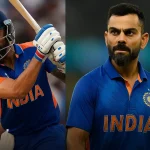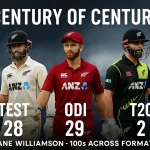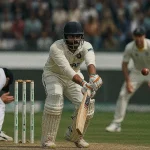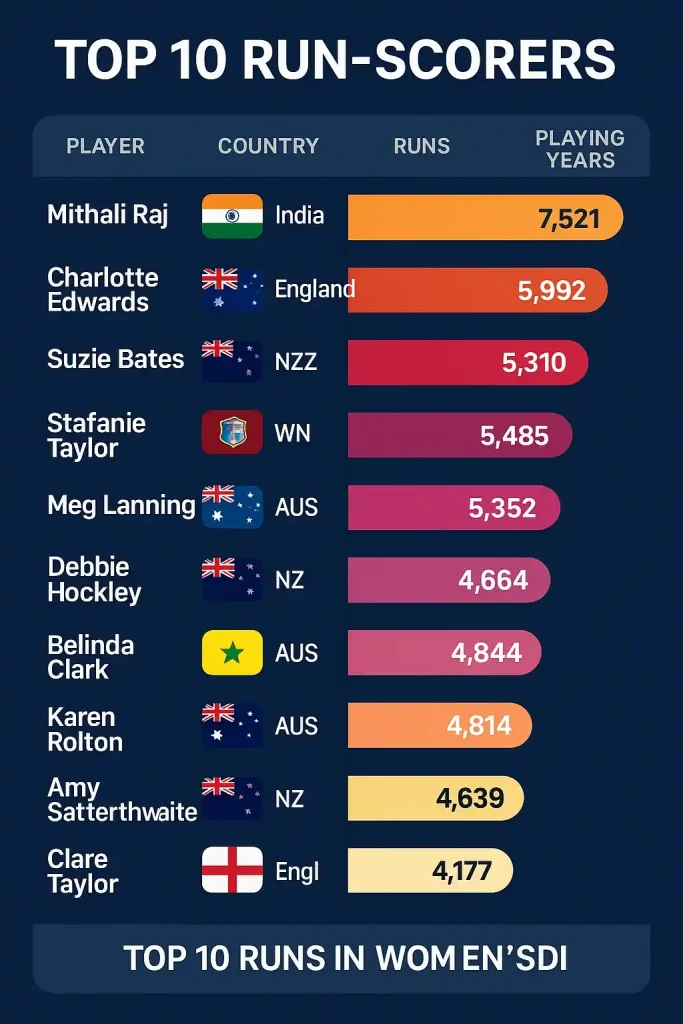
Dublin, circa 2018. Let me paint the picture. A moment in time not widely publicized or streamed on television. Flashy highlight reels designed by algorithms to grab our attention—none of this existed. Yet there were a select few who had their eyes glued to the screen, and to them, time will never erase what they witnessed on that day. A New Zealander by the name of Amelia Kerr single-handedly transformed international women’s cricket by scoring a whopping 232 runs not out during an ODI match. The record was shattered, too. This wasn’t simply a new high score etched into the books; this was an explosion of unfathomable proportions.
As much as I would like to deny this fact, it is essential to acknowledge that women’s cricket has struggled to establish itself in the sports world. And even when there is attention diverted towards the sport, the coverage comes with a plethora of meaningless statistics. However, numbers have a story to tell, and emotions are also tied to them. Historical figures are dense, so they may be complex, but not for one to feel the haunting echo present in Belinda Clark’s 229* in 1907— the first woman or man to score a double century in an ODI. Or the simmering fury in a 171* innings by Kaur against Australia. These are not mere high scores. These serve to cement a powerful statement.
Consider the names. The knocks. The moments. The anticipation before a boundary, the perspiration on the helmet grill, the stillness before an eruption. This is more than recollection; it is a catalog of defiance and extraordinary achievement.
Top 10 Single-Innings Scores in Women’s ODI Cricket
| Rank | Player | Score | Opponent | Year | Venue |
| 1 | Amelia Kerr | 232* | Ireland | 2018 | Dublin |
| 2 | Belinda Clark | 229* | Denmark | 1997 | Mumbai |
| 3 | Deepti Sharma | 188 | Ireland | 2017 | Potchefstroom |
| 4 | Chamari Athapaththu | 178* | Australia | 2017 | Bristol |
| 5 | Charlotte Edwards | 173* | Ireland | 1997 | Pune |
| 6 | Harmanpreet Kaur | 171* | Australia | 2017 | Derby |
| 7 | Mithali Raj | 163* | New Zealand | 2002 | Taunton |
| 8 | Meg Lanning | 152* | Sri Lanka | 2016 | Sydney |
| 9 | Suzie Bates | 151 | Pakistan | 2009 | Christchurch |
| 10 | Laura Wolvaardt | 149 | England | 2023 | Cape Town |
Amelia Kerr: The Quiet Storm from Wellington
What Kerr did that day was never flashy. She didn’t showboat. No wild celebrations. Just poise. Calm. And a rhythm that built like a storm. You could see it in how she ran singles early on, barely taking risks. And then something changed — the footwork got sharper, the wrists flickier, and the gaps started begging to be exploited. Her hundred came up in 77 balls. Her next 132? In just 68. That shift — that controlled chaos — is what made the innings terrifying.
And get this — she followed that monstrous knock with a five-wicket haul. Who does that? Who wakes up, smashes a double century, and then comes back to break a batting lineup? Amelia Kerr does. At 17.
Belinda Clark: When Nobody Was Watching, She Rewrote the Rules
December 1997. India. Women’s cricket barely got press coverage. Australia were playing Denmark in a World Cup game most people didn’t even know was scheduled. Clark, the captain, stepped in with a mission. And she didn’t stop until the scorecard read 229*. That record stood tall — untouched — for over two decades. Not just in women’s cricket. In the entire ODI landscape. Tendulkar, Sehwag, Gayle — all came after.
There were no YouTube reels to document every shot. But those who saw it live say she was relentless. Placement over power. Patience over panic. Leadership not just by decision, but by example.
Not Just Big Scores — But Big Moments
Some innings stick not because of the scoreboard, but the setting. Harmanpreet’s 171* came in a World Cup semi-final. Australia were heavy favourites. India weren’t even supposed to push them. But that knock? It turned heads. Lit screens. Sold out jerseys. It was violent in its fluency, raw in its passion. And it told millions of Indian girls that cricket didn’t need to be whispered — it could be screamed.
Same with Athapaththu’s 178* against Australia. Sri Lanka lost the match. But she won hearts — and something bigger: respect. No one plays an innings like that in a losing cause unless they believe they can rewrite the ending someday.
Career Consistency Matters Too — Not Just That One Knock
| Rank | Player | Matches | Runs | Average | 100s | 50s |
| 1 | Mithali Raj | 232 | 7805 | 50.68 | 7 | 64 |
| 2 | Charlotte Edwards | 191 | 5992 | 38.16 | 9 | 46 |
| 3 | Suzie Bates | 154 | 5500 | 42.30 | 12 | 32 |
| 4 | Stafanie Taylor | 153 | 5400 | 43.88 | 7 | 37 |
| 5 | Meg Lanning | 125 | 5100 | 52.67 | 15 | 19 |
This is the other side of the coin. You can’t just be explosive. You have to last. Build. Stick around. Players like Mithali Raj didn’t dominate headlines every week. But 7805 runs over 232 matches? That’s legacy. That’s a quiet fire.
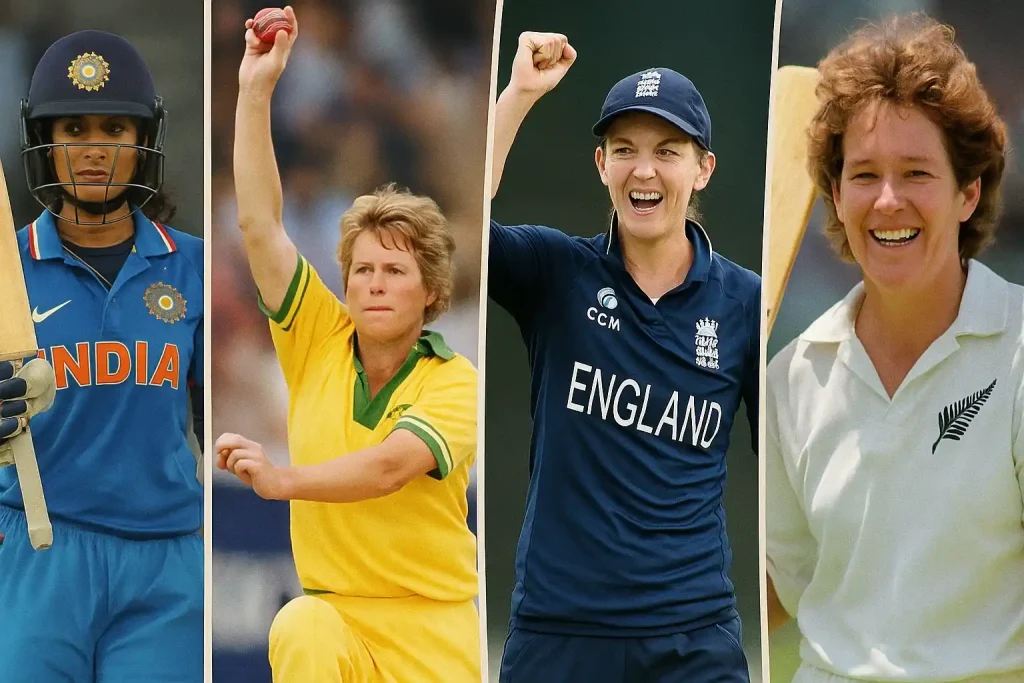
What Happens Now? Who’s Coming for the Crown?
Shafali Verma. Phoebe Litchfield. Alice Capsey. The names are getting younger. The game’s getting faster. And if you think 232 is the ceiling, you haven’t been watching the Women’s Premier League. Batting is evolving. Boundaries are shrinking. Intent is bolder. And one day, maybe soon, someone’s going to hit 250. Maybe even 300. It won’t be luck. It’ll be timing, training, and belief.
Records are made to be broken. But only when someone believes they belong there. Clark believed it before we did. Kerr proved it while we blinked.
And somewhere, right now, someone’s watching those innings on a cracked screen in a small town, whispering: “Why not me?”

Meet Arjun Kushaan, a passionate cricket analyst at The Cricket24x7. From street matches in his childhood to competitive college tournaments, cricket has always been a central part of Arjun’s life. With a strong background in data analysis and a natural affinity for numbers, he brings a fresh, analytical lens to the game. At The Cricket24x7, Arjun blends his deep love for cricket with his data-driven approach to deliver detailed insights and well-rounded coverage for fans of the sport.



